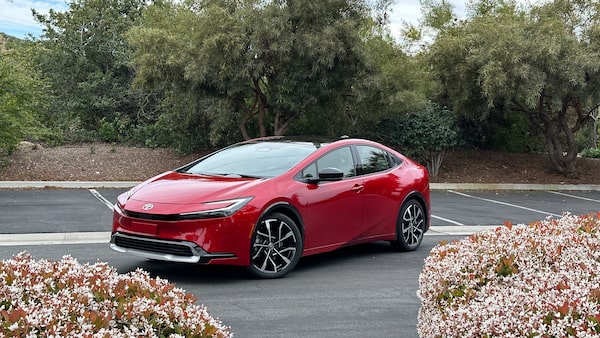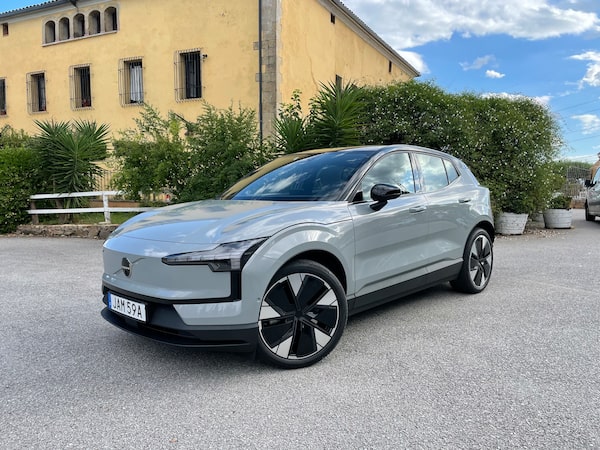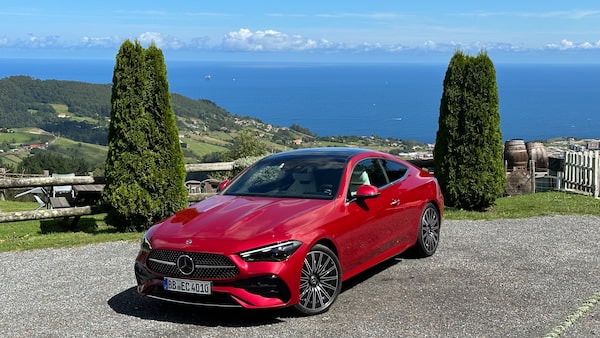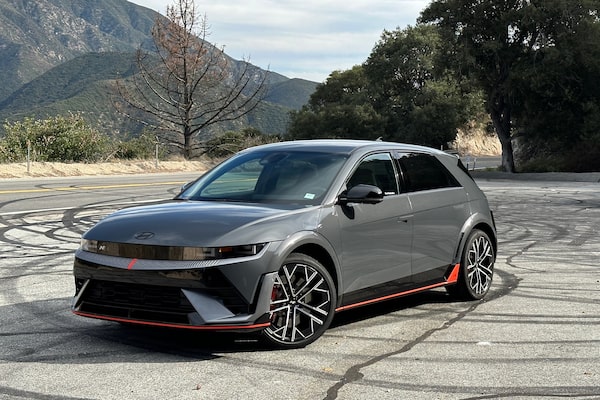
The 2023 Toyota Prius Prime will start at less than $38,000 and qualify for the maximum $5,000 federal rebate.Mark Richardson/The Globe and Mail
The ballots are live, and after a year of driving all kinds of cars in all kinds of places, it’s time to vote.
I’m a judge for the World Car of the Year awards, and every January, about 100 automotive journalists from at least 30 countries vote to determine which is the best car in the world.
We don’t all get to drive everything – I’ve never even heard of the Xpeng P7 or the Sev E-Wan Cross – but we vote for what we know and there are enough of us that the cream will surely rise to the top.
It’s an anonymous vote so no one feels pressured or threatened to vote in any way differently from how they truly feel, but I’m happy to share my thoughts here. The deadline for initial voting is coming at the end of January when the choices will be whittled down to a shortlist in each of five categories. Then there’ll be more judging and more voting, and then the final announcement at the New York auto show in the spring.
There are 69 vehicles in contention this year, in five different categories: World Car of the Year, World Luxury Car, World Performance Car, World Urban Car (which must be smaller than 4.25 metres in length, about the length of a Volkswagen Golf) and World Electric Vehicle. To be eligible, vehicles must be mass produced, either all-new or significantly redesigned, and must be sold in at least two major markets on at least two continents.
All manufacturers’ vehicles are eligible if they fit the criteria and there’s no entry fee. This is unlike some other award programs that manufacturers must pay to enter or, like Canada’s own Automobile Journalists Association of Canada (AJAC) awards, are only open to those manufacturers who pay several thousand dollars in annual dues to be corporate members of the association.
I’ve driven about half the nominated vehicles, including a few of the more obscure ones that aren’t sold in North America, but for me, the choice this year is an easy one. The redesigned Toyota Prius hybrid is the best of them all and deserves the top title. Judges assess eight different parameters – value, safety, innovation, emotional appeal, market significance, environmental impact, comfort and performance – and in its own way, the Prius excels at every one. The last two, comfort and performance, are not descriptions I’d attach to any of the Prius’s previous generations, but this time around, it’s spacious and zippy. I never thought I’d say that about a Prius.

The 2025 Volvo EX30 will come with two powertrain options - a single motor, rear-wheel-drive option with more range and a dual motor, all-wheel-drive version with less range.Petrina Gentile/The Globe and Mail
My second choice is the Volvo EX30, which is also my first choice for Urban Car and Electric Vehicle. I like that it fits a great deal into a small package, and that it is so pleasant to drive. I really like that it includes so much of Volvo’s safety technology but also cuts its carbon footprint – significant amounts of the well-thought-out car are made from recycled materials. It’s undoubtedly a premium vehicle, yet it starts in the mid-$50,000s.

The 2024 Kia EV9 will come in five trims with between 201 and 379 horsepower.Michael Bettencourt/The Globe and Mail
Right behind it is the Kia EV9, the South Korean maker’s full-size SUV. It’s not an easy thing to design such a large electric vehicle without just loading it down with batteries to shift the weight, but the Kia comes through as an intelligent choice for a bigger family that wants an all-electric hauler. Again, value is a significant parameter in the judging and the EV9′s starting price tag of $63,000 for so much vehicle is admirable.
Price is not so important for the Luxury cars, of course, though still counts for something. This is where my choice in voting was limited to the German brands because I’ve never driven a Nio or a HiPhi or a Hongqi. Those Chinese makers have excellent reputations and they’ll probably be sold in Canada within a decade, but for now, I know where I am with a Mercedes-Benz or BMW. My choice for World Luxury Car is the Mercedes-Benz CLE, which is the new successor to both the C and E coupes. It drives without any excuses, combining the space of the E with the performance of the C, especially if you opt for the larger, well-justified engine.

The 2024 Mercedes-Benz CLE 300 Coupé has a two-litre inline-four engine that makes 255 horsepower and 295 lb-ft of torque.Mark Richardson/The Globe and Mail
Which brings me to the World Performance Car of the Year. I’d like to say I voted for the Ferrari Purosangue or the Aston Martin DB12, but I’ve not driven either of them and can’t form an opinion that transcends emotion. I was tempted to vote for the Hyundai Ioniq 5 N that got me pulled over and almost got me into trouble with the California Highway Patrol on a twisty highway last year, because it really is an exceptional car at a relatively affordable price. It will probably win the award, but in the end, it’s just too gimmicky for me.

The N division pumped up the 320 horsepower of the top-end regular car to a mighty 641 horsepower.Mark Richardson/The Globe and Mail
I went with both my heart and my right foot and chose the Mercedes-AMG GT because it’s gorgeous, it’s responsive and powerful, it gives you (almost) everything you want in a sports car, and it’s comfortable enough that I can get in and out of it without looking like a sad idiot. As I get older, that really should be a parameter for judging all of its own.

The second-generation 2024 Mercedes-AMG GT Coupe is designed to be easier to drive day-to-day than the previous version.Mark Richardson/The Globe and Mail
 Mark Richardson
Mark Richardson